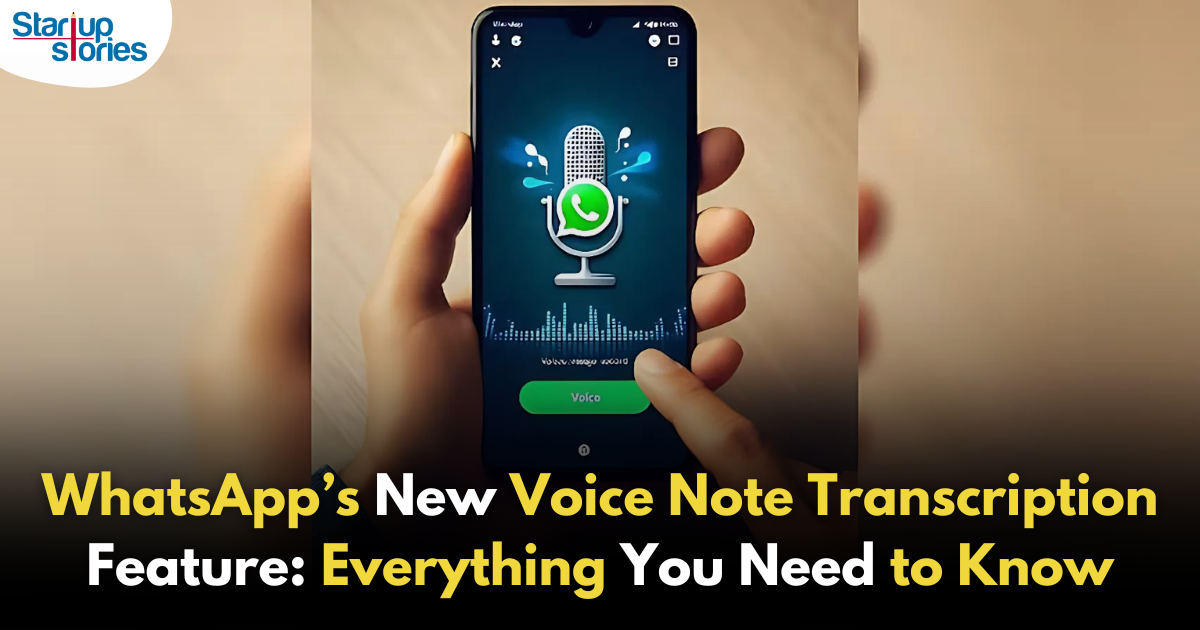How To
How To Maintain Great Relationships With Clients

You have nailed your pitch. You have sealed the deal and you have the client on board. What you may miss to take a note of is how important it is to maintain a great relationships with your clients.Here’s how you can maintain relationships with your clients and have a long and successful future with them!
1. Communicate regularly
More often than not, problems between people stem from not being able to communicate and sending across your message properly. Whatever the setbacks, the problems can be solved with effective and direct communication. If you can’t meet the deadlines, let your clients know why there is a delay. If you can deliver part of the end product now and do the rest at a later day, keep your clients updated. Direct and clear communication is the founding stone for a happy relationship and only through that can you ensure a successful journey!

Picture credits: smallbizzclub.com
2. Always be proactive
The first few days with a new client are always exciting. You are at the top of your game and you understand exactly what the client wants. However, through the months, things become mundane and you aren’t that invested in the client anymore. In order to avoid this tapering off of interest, be proactive and stay one step ahead of the client at all times. Furthermore, to ward off the competition, it is important to let the client know you have their best interests at heart and that no matter what, you will always strive to exceed their expectations with your work.

3. Don’t be afraid to bring your budget to the table
When it comes to delivering the best for your client, make sure you don’t look at budget as a bad thing. Be realistic about the amount of money you require to meet the deadlines set by your clients and when you do have monetary constraints, let your clients know why that is happening. Don’t wait till the very end of the project to tell your client you couldn’t deliver. When you do that, it results in a break of trust and could lead to you losing your credibility with the clients.

Picture credits: spareworkspace.com.au
4. Let your clients know you are sure of what you are delivering
Oftentimes, we live by the policy of thinking the client (or customer) is always right. If your client doesn’t see the final picture your way, convince them the final product will work because you have a clear understanding of the market. Tweak things if needed, but on the whole, ensure that you stick to your idea. The more disagreements and too and fros happen, the more time is wasted on your product. Not only that, this also results in delays in payment and that is never good. When delivering, let your clients know why you did things a particular way and why you think they will work. If you have a clear understanding on how the market works, convincing your clients becomes easier.

5. Show your results
To maintain a good rapport with your clients, make sure you have regular meetings to showcase all the major and minor milestones and let your clients know what you have in mind for them in the future. Not only does this show the amount of effort you have put into your client’s projects, it also shows that you are extremely invested in your client.

Picture credits: businessnewsdaily.com
Honesty, clarity and managing expectations are all important factors to look at when it comes to maintaining and managing relationships with your clients. If you think we missed out on any other ways to build relationships with your clients, comment and let us know!
How To
Google Brings AI to PDFs with “Ask about this PDF” Feature

Google has introduced a new AI-powered feature for its Files by Google app, allowing users to easily interact with PDF documents. The “Ask about this PDF” feature, powered by Gemini, enables users to ask questions about the document’s content directly within the app.
How it Works
Access
The feature is available in the updated Files by Google app (version 16.0.5 and above). Users can download the latest version from the Google Play Store to access this functionality.
Functionality
Users can simply tap the “Ask about this PDF” button while viewing a document. This prompts the app to allow users to ask questions regarding the PDF content, such as:
- Summaries of sections
- Clarifications on specific paragraphs
- Details about tables and charts
AI Interaction
The app leverages the power of Gemini AI to provide accurate and informative answers based on the content of the PDF. This interaction enhances user engagement by making it easier to extract relevant information without manually scrolling through lengthy documents.
User-Friendly Experience
AI-generated responses are displayed as an overlay, enabling users to view both the original PDF and the AI-generated answers simultaneously. This feature streamlines the process of obtaining information from PDFs, making it particularly useful for students and professionals who frequently work with such documents.
Availability
Gemini Advanced Required
The “Ask about this PDF” feature is currently exclusive to users of Gemini Advanced, a subscription service that provides enhanced capabilities of Google’s AI tools.
Limited to Files by Google
At present, this feature is available only within the Files by Google app. However, there are expectations that similar functionalities may be integrated into other Google applications in the future, such as Google Drive.
Future Outlook
This new feature demonstrates Google’s commitment to integrating AI seamlessly into its products and services. By enhancing the user experience with innovative tools like “Ask about this PDF,” Google aims to improve productivity and accessibility for its users.
Expansion Plans
Given the positive reception of this feature, it is likely that Google will explore expanding Gemini’s capabilities across other platforms and applications, potentially offering similar functionalities for various document types and formats.
Conclusion
Google’s introduction of the “Ask about this PDF” feature in its Files by Google app marks a significant advancement in how users interact with digital documents. By leveraging Gemini AI, Google is not only enhancing productivity but also making information retrieval more efficient and user-friendly. As AI continues to evolve, features like these are expected to play a crucial role in transforming digital workflows across various sectors.
How To
WhatsApp Introduces Voice Note Transcription: A Complete Guide to the New Feature!

WhatsApp is revolutionizing how users handle voice messages with the introduction of its new Voice Note Transcription feature. Designed to cater to diverse user needs, this update ensures that you never miss out on voice messages, even in situations where listening isn’t an option—be it a noisy environment, an important meeting, or simply when audio isn’t convenient.
What Is Voice Note Transcription?
The Voice Note Transcription feature converts voice messages into text, allowing users to read the content instead of listening. This thoughtful solution addresses scenarios where audio playback may not be practical. With this addition, WhatsApp enhances communication efficiency, helping users stay connected regardless of their circumstances.
How Does It Work?
Using the transcription feature is straightforward:
- Enable the Feature: Navigate to Settings > Chats > Voice Message Transcripts to enable or disable the feature and select your preferred transcription language.
- Transcribing a Voice Note: Once activated, long-press the voice message you’ve received and tap ‘Transcribe’. The app will instantly generate a text version of the audio message for you to read at your convenience.
This process is handled entirely on your device, ensuring that the voice messages remain private. Neither WhatsApp nor external servers have access to the content, maintaining the platform’s commitment to privacy.
Privacy and Security
In line with WhatsApp’s dedication to user security, the transcription process is executed locally on the device. This ensures that your voice messages are never sent to external servers, and even WhatsApp itself cannot access them. By integrating this feature while preserving its robust end-to-end encryption, WhatsApp continues to prioritize user trust.
Key Privacy Features
- Local Processing: Transcripts are generated entirely on-device, ensuring that no one else—not even WhatsApp—can access your personal messages.
- End-to-End Encryption: The feature maintains WhatsApp’s strong privacy standards, ensuring that only the sender and recipient can access their voice messages.
Global Rollout and Language Support
The Voice Note Transcription feature is rolling out globally over the coming weeks. Initially, it supports selected languages such as English, Spanish, Portuguese, Russian, and Hindi. WhatsApp has confirmed plans to expand its language offerings soon, ensuring wider accessibility for users worldwide.
Why This Feature is a Game-Changer
This new addition addresses a common pain point for WhatsApp users: handling voice messages when audio playback isn’t feasible. Whether you’re in a crowded space, attending a quiet event, or dealing with a lengthy voice note, the transcription feature provides a convenient alternative.
Benefits of Voice Note Transcription
- Multitasking Convenience: Users can skim through voice messages while juggling other responsibilities without needing headphones.
- Accessibility Improvement: The feature enhances accessibility for individuals with hearing impairments or those who prefer text-based communication over audio.
- Enhanced Communication: Merging the personal touch of voice communication with the convenience of text allows for more flexible interactions.
Conclusion
By introducing the Voice Note Transcription feature, WhatsApp continues to innovate and enhance its platform. This tool exemplifies how technology can adapt to diverse user needs while maintaining security and privacy. Keep an eye on your app settings—this feature is rolling out soon and is set to make staying connected easier than ever. As WhatsApp expands its capabilities, users can look forward to a more personalized and efficient messaging experience that caters to their evolving communication preferences.
How To
WhatsApp’s Secret Code for Locked Chats: How to Use It for Extra Privacy!

WhatsApp has introduced an innovative security feature known as Chat Lock, which enhances user privacy by allowing individuals to secure their personal chats from unwanted access. A key component of this update is the Secret Code option, enabling users to access locked chats through a unique code, thereby making private conversations even more discreet.
What is the Secret Code for Locked Chats?
The Secret Code feature allows users to set a custom code for their locked chats, effectively hiding them and making them accessible only through a specific search command. Instead of simply navigating to the Locked Chats folder within the app, users can assign a custom name or code that conceals these chats entirely from the main chat screen.
Once the Secret Code is established, users can easily search for it within the app to access their hidden chats. If someone attempts to enter an incorrect code, the locked chats will remain invisible, adding an extra layer of security.
Steps to Set Up a Secret Code for Locked Chats on WhatsApp
If you want to enhance the security of your chats with a Secret Code, follow this step-by-step guide:
- Lock Your Chats:
-
-
- Select the chat you wish to lock.
- Tap the three dots in the top-right corner and choose Lock Chat.
-
- Access the Locked Chats Folder:
-
-
- After locking some chats, open WhatsApp and navigate to the Locked Chats folder.
-
- Set the Secret Code:
-
-
- Tap the three dots in the top-right corner of the Locked Chats screen and select Chat Lock Settings.
- Choose the Secret Code option.
- Enter a memorable code of your choice (this can include words or emojis).
- Tap Next, re-enter your code to confirm, and then tap Done to save your code.
-
- Hide Locked Chats:
-
- To make locked chats less visible, go back to the Chat Lock Settings page and toggle on Hide Locked Chats.
Important Considerations
- Code Access: After setting up your Secret Code, you will need to enter it each time you want to access your hidden chats.
- Privacy Caution: If someone knows your Secret Code, they can unlock your chats.
- Code Retrieval: If you forget your Secret Code, there is no recovery option unless you have a backup of your chats.
Benefits of Using the Secret Code Feature
The introduction of the Secret Code significantly enhances privacy for WhatsApp users. It allows individuals to keep sensitive conversations hidden from prying eyes, making it particularly useful for those who share their devices or are concerned about unauthorized access. This feature is ideal for various scenarios, such as discussing personal matters or planning surprises without fear of being discovered.
Conclusion
With its new Secret Code feature for locked chats, WhatsApp has taken a significant step toward enhancing user privacy and security. By allowing users to hide their sensitive conversations behind a customizable code, WhatsApp provides an effective solution for those looking to keep their communications confidential. As digital privacy becomes increasingly important, features like these empower users to take control over their personal information and interactions within the app.













lnji6
June 6, 2025 at 11:34 am
clomiphene chart clomiphene chart where can i buy clomid pill can i purchase generic clomid for sale cost cheap clomid without insurance buy cheap clomid pill how much does clomiphene cost without insurance
J88
November 5, 2025 at 2:19 pm
Đến với J88, bạn sẽ được trải nghiệm dịch vụ cá cược chuyên nghiệp cùng hàng ngàn sự kiện khuyến mãi độc quyền.
MM88
November 6, 2025 at 8:39 am
Với giao diện mượt mà và ưu đãi hấp dẫn, MM88 là lựa chọn lý tưởng cho các tín đồ giải trí trực tuyến.
谷歌外推
November 8, 2025 at 6:30 am
采用高效谷歌外推策略,快速提升网站在搜索引擎中的可见性与权重。谷歌外推
MM88
November 11, 2025 at 4:19 am
Khám phá thế giới giải trí trực tuyến đỉnh cao tại MM88, nơi mang đến những trải nghiệm cá cược thể thao và casino sống động.
谷歌站群
November 12, 2025 at 8:34 pm
专业构建与管理谷歌站群网络,助力品牌实现全域流量的强势增长。谷歌站群
GO88
November 24, 2025 at 5:38 pm
Tham gia cộng đồng game thủ tại Go88 để trải nghiệm các trò chơi bài, poker phổ biến nhất hiện nay.
iwin
November 30, 2025 at 10:30 am
iwin – nền tảng game bài đổi thưởng uy tín, nơi bạn có thể thử vận may và tận hưởng nhiều tựa game hấp
bwin casino gutscheincode
December 20, 2025 at 8:42 pm
In der Spielbank Bad Neuenahr Online werden neue
Besucher mit einem exklusiven Willkommens-Erlebnis empfangen, das den Ton für ein luxuriöses Spielerlebnis angibt.
Mit über 80 Spielautomaten, darunter beliebte Titel wie Dragon Link, Lightning Link und Mo’
Mummy JP, bietet das Casino ein elektrisierendes Erlebnis für Fans elektronischer Spiele.
Und für treue Gäste warten wertvolle Aktionen und Cashback-Angebote, die die Spielbank Bad Neuenahr zu einem unwiderstehlichen Ziel für anspruchsvolle
Spieler machen, die ein erstklassiges Spielerlebnis
suchen. Mit schnellen Auszahlungen auf Anfrage können die Spieler ihre Gewinne ohne Verzögerung genießen. Seit 1948 bietet unser historisches Casino große
Gewinne und blitzschnelle Action für Spieler aus Deutschland und
darüber hinaus. Tauchen Sie ein in den Nervenkitzel von Spielbank Bad Neuenahr
Online, wo hochwertige Tischspiele auf moderne Spielautomaten in einer eleganten Atmosphäre treffen.
Mit über 80 Spielautomaten und vier Tischspielen, darunter American Roulette und
Blackjack, ist für jeden Spieler etwas dabei. Mit über 80 Spielautomaten und 4 Tischspielen, darunter American Roulette und Blackjack, haben Sie die Qual der Wahl.
Dieses historische Casino ist seit 1948 ein Maßstab für Unterhaltung
und bietet eine exquisite Live-Spielatmosphäre, professionelles Personal und ein klimatisiertes Umfeld,
das perfekt für jede Gelegenheit ist. Als Beweis für ihr Engagement
für Exzellenz bietet Spielbank Bad Neuenahr eine
kuratierte Auswahl an hochwertigen Spielerlebnissen,
die auf die raffinierten Vorlieben ihrer Klientel zugeschnitten sind.
References:
https://online-spielhallen.de/frumzi-casino-auszahlung-ein-umfassender-leitfaden-fur-reibungslose-gewinnauszahlungen/